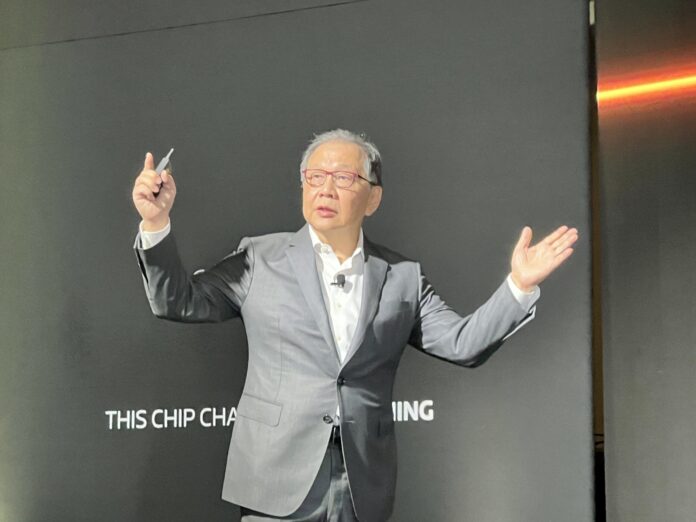Target growth segments for MediaTek include ASICs, automotive, broadband and IoT
DANA POINT, California—CEO Rick Tsai took the stage for the opening keynote of the fabless semiconductor firm’s annual MediaTek Executive Summit and immediately struck a contemplative tone. In usually temperate Orange County, rain welcomed attendees yesterday (Nov. 15) but gave way to clear skies as the formal program began.
Walking in this morning, Tsai said, today is much nicer compared to yesterday. “I feel so much happier. Then it occurred to me that today is Nov. 16, 2023; almost exactly six weeks to go before the end of 2023. As all of you know, 2023 is not exactly a great year for our industry and our company.” But, he said, “The important thing is 2023 is going to be gone in six weeks. That’s the important thing. We will have a much brighter 2024.”
With that Tsai, formerly the CEO of TSMC and of Taiwanese network operator Chunghwa Telecom, went through MediaTek’s globalization and diversification strategy which hinges on leaning into growth segments—ASICs, automotive, broadband and IoT—and more uptake in Europe and North America. And, of course, enabling generative artificial intelligence (gen AI) across its portfolio is key to the “five year transformation” plan.
To that goal of “ubiquitous” gen AI, the core concept here is that putting products into market will quickly catalyze the mainstreaming of new types of use cases. So for smartphones think personal assistants and content creation which will migrate to all product tiers, increase silicon content and foster new replacement cycles. For automotive, the goal is to grab share as vehicles become software defined and deliver new cockpit and in-cabin experiences, and set the stage for increasingly autonomous driving. In support of growing enterprise revenues, Tsai called out cloud computing ASICs for AI training and inference and improved productivity devices. And in the industrial computing space, power digital twins, robotics, computer vision systems and embed AI in PCs.
Pointing to the slide behind him, which is summarized above, Tsai got a laugh (from me at least) when he quipped, “Many words. You can read them if you like.” But seriously, “Gen AI will generate hugely exciting experiences for billions of users. And that will accelerate the replacement cycle.”
Tsai continued, noting that MediaTek has increased its business relationships with global Tier 1 customers and other ecosystem players “in a very low-key manner…We understand for MediaTek to grow in the next five years, we need to globalize, we need to diversify our business revenue, while we continue increasing our existing business in our existing regions.” He said realizing growth in the United States is “tremendously important for us.”
His near final thoughts, and largely the point of his talk, was the goal to “grown not only in our revenue…but also in our reputation.” He namechecked “strong partnerships” with Arm, TSMC and NVIDIA. “It is our intention, and it is our effort, to be…a relevant ecosystem player going forward.”

